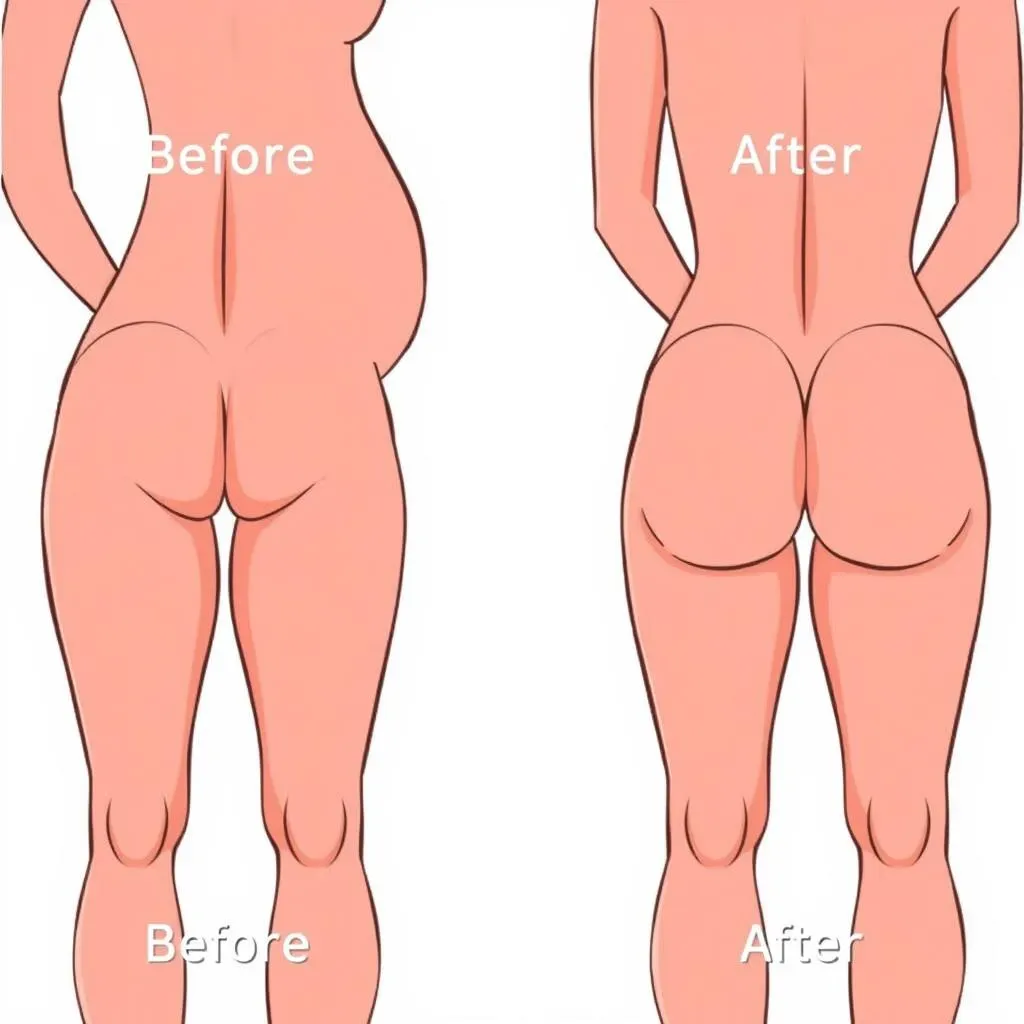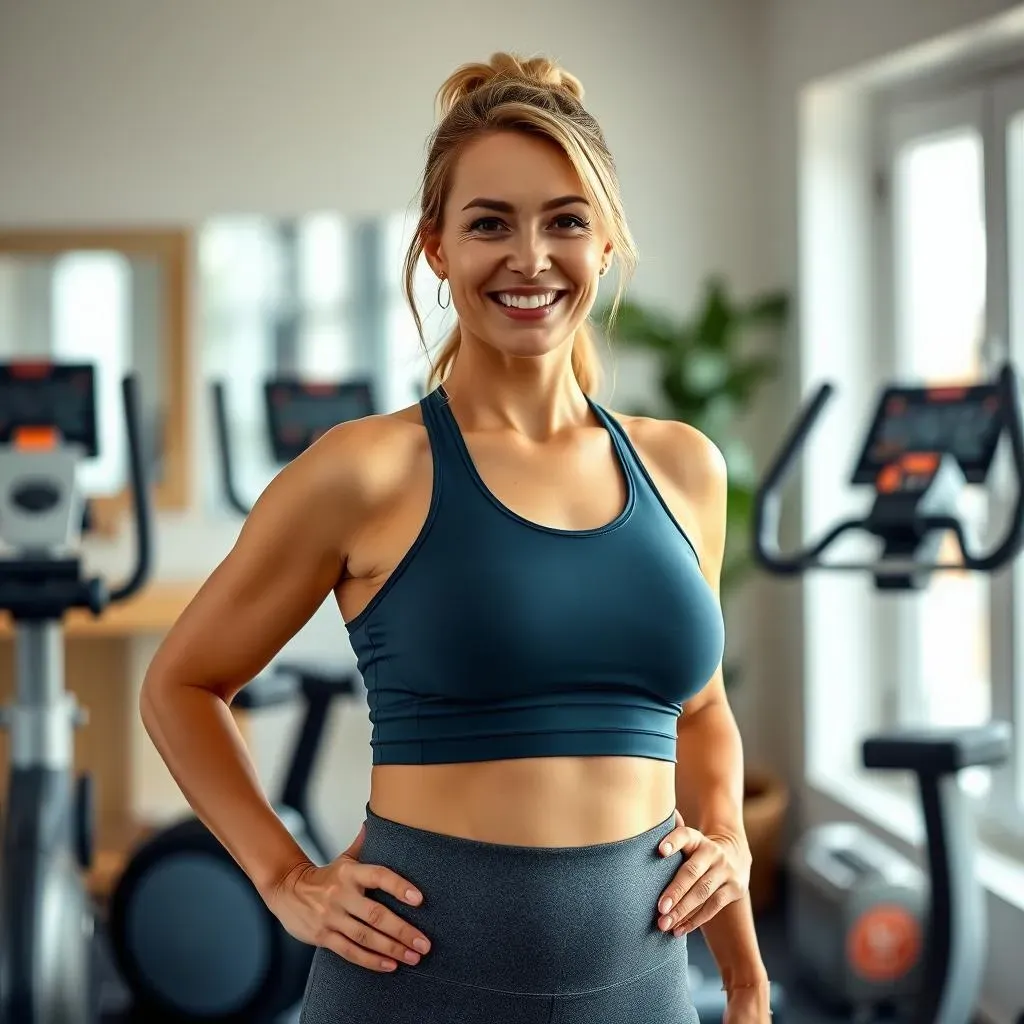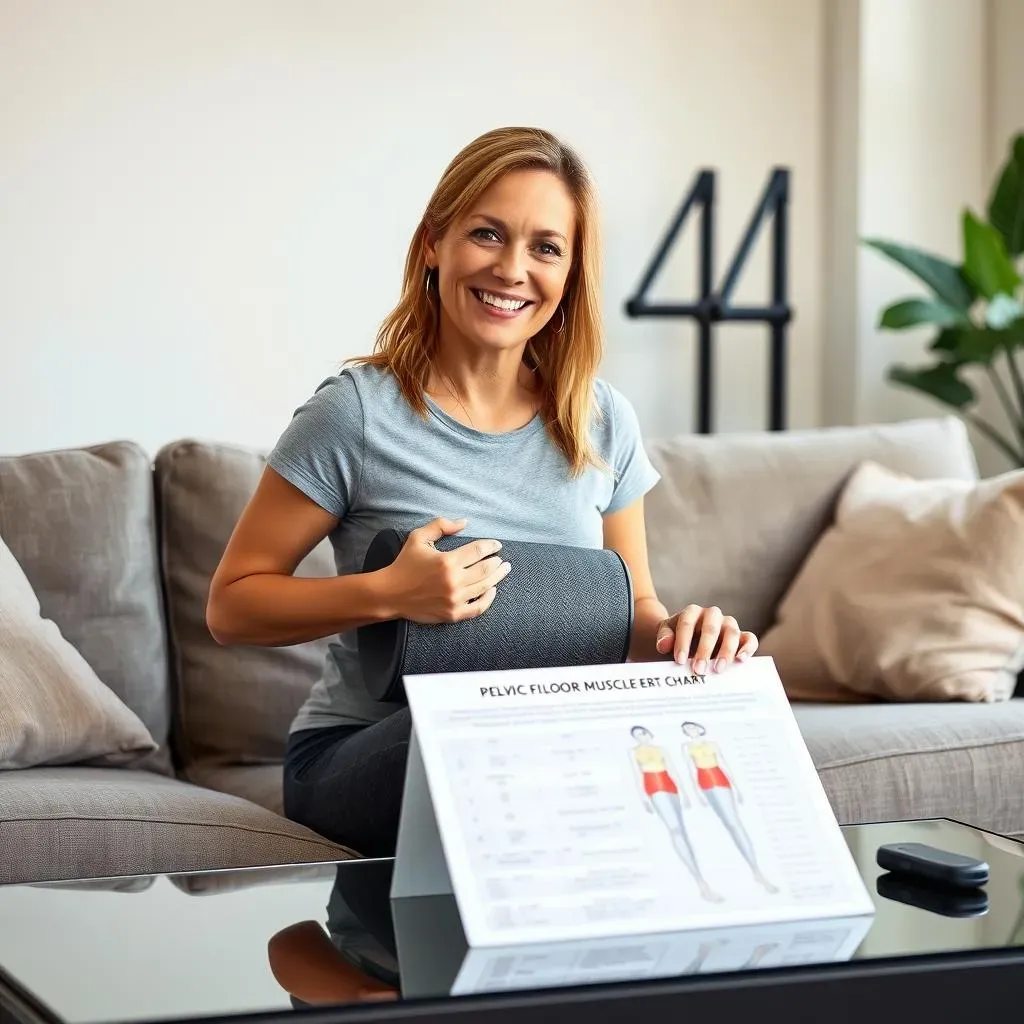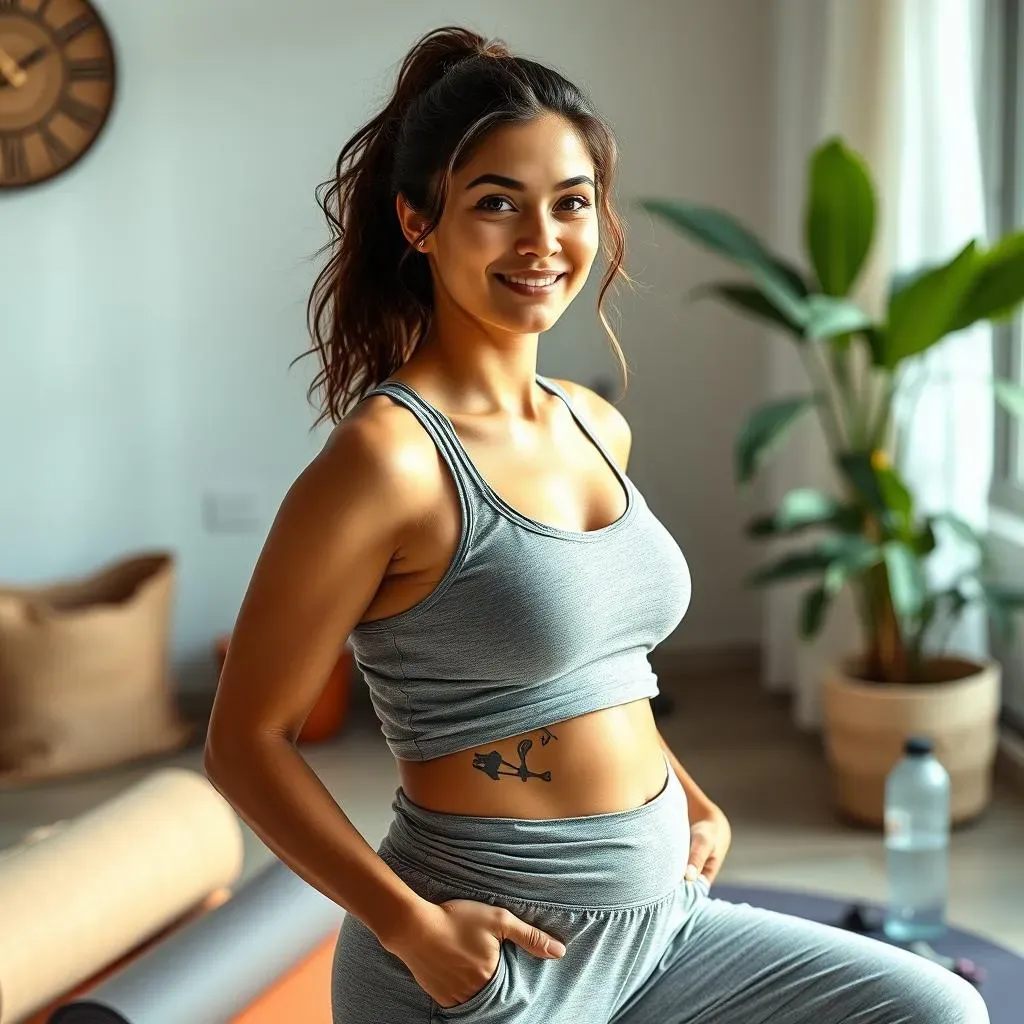Table of Contents
So, you've had a baby, congratulations! But now you're noticing a few changes, especially in your backside. You might've heard the term "mom butt," and yeah, it's a real thing. It's not just about looks either; it’s about the strength and support your glutes provide, which can take a hit after pregnancy. Weak glutes can mess with your posture, throw off your balance, and even cause pain in your hips, knees, and back. It's not just about fitting into your pre-baby jeans—it's about feeling good and moving well. This article isn't about quick fixes or crazy gym routines. Instead, I'm going to show you seven simple, yet powerful, butt workouts at home for postpartum recovery. These aren't complicated moves, and you don’t need any fancy equipment. We'll discuss why your glutes are so important, how these exercises can help, and the crucial link between your glutes and pelvic floor health. Let’s get started on this journey to rebuild your strength and confidence, one glute bridge at a time!
Understanding "Mom Butt" and Why It Matters for Postpartum Recovery

Understanding "Mom Butt" and Why It Matters for Postpartum Recovery
Okay, so "mom butt" isn't exactly a medical term, but it's something many of us experience after having a baby. It's that feeling of your glutes just...disappearing. They might feel flatter, weaker, and generally less perky than before. But it’s not just about the shape of your rear; it’s really about the muscles not firing up as they should. Pregnancy and childbirth can stretch and weaken those glute muscles, which is why you might find yourself with this "new" posterior. The thing is, those glutes are super important. They're not just for filling out your jeans; they're the powerhouse of your lower body, and when they’re not working properly, it can cause a whole host of problems. So, understanding why this happens is the first step in getting those glutes back in action, and that's what this section is all about.
The Power of Glutes: More Than Just Aesthetics

The Power of Glutes: More Than Just Aesthetics
The Real MVPs of Movement
Let's be real, we often think about glutes just for how they look in a pair of jeans. But they're so much more than that! Your glutes, which include the gluteus maximus, medius, and minimus, are the powerhouses behind pretty much every movement you do. They're like the engine in a car, driving you forward, helping you stand up, walk, climb stairs, and even just maintain good posture. When your glutes are strong, everything else works better. Think of them as the unsung heroes of your body, working tirelessly to keep you moving and grooving. They’re not just there for show; they’re the foundation for all sorts of activities.
When your glutes are weak, your body starts to compensate. Other muscles, like your hamstrings and lower back, have to step in and do the work that your glutes should be handling. This overcompensation can cause all sorts of problems, like lower back pain, tight hamstrings, and even knee problems. It’s like having a car with a broken engine; everything else starts to wear out faster. So, strengthening your glutes isn’t just about getting a perkier behind; it’s about making sure your body is functioning efficiently and pain-free. It's about building a solid foundation for all of your movements.
Glute Muscle | Function | Why It Matters |
|---|---|---|
Gluteus Maximus | Hip extension, external rotation | Power for walking, running, climbing stairs |
Gluteus Medius | Hip abduction, stabilization | Balance, preventing knee injuries |
Gluteus Minimus | Hip abduction, internal rotation | Hip stability, movement efficiency |
More Than Just a Pretty Picture
I know, I know, it's easy to get caught up in wanting a "better-looking" butt, but honestly, the benefits of strong glutes go way beyond aesthetics. Think about it: a strong core and engaged glutes help you maintain good posture, which can prevent back pain and make you look taller and more confident. They also play a huge role in balance and stability, which is particularly important for new moms who are often carrying their little ones. Imagine walking around with a wobbly foundation; it's not exactly comfortable or safe. Strong glutes are your body’s built-in stabilizers, helping you move with grace and ease.
And let’s not forget about the impact on your everyday life. Things like picking up your baby, carrying groceries, or even just getting out of bed become easier and less painful when your glutes are doing their job. It’s like having a secret superpower that makes you feel stronger and more capable. So, when we talk about strengthening your glutes, we’re not just talking about vanity; we're talking about building a healthier, more functional body. It’s about empowering yourself to move through life with strength and confidence. It's about making the everyday tasks less of a struggle and more of a breeze.
7 MustTry Butt Workouts at Home for Postpartum Recovery

7 MustTry Butt Workouts at Home for Postpartum Recovery
Get Ready to Activate Your Glutes!
Alright, let's get to the good stuff! We're not talking about crazy, complicated exercises here. I've picked seven simple but incredibly effective butt workouts you can do right at home. These moves are designed to target all those important glute muscles we talked about – the maximus, medius, and minimus – helping you rebuild strength and stability. Think of these exercises as your secret weapon against "mom butt." The beauty of these moves is that you don't need any fancy equipment, just your body and a little bit of space. You can even squeeze them in while the baby is napping or during a quick break. It’s all about consistency, even if it’s just a few minutes each day.
Before we jump in, remember, listen to your body. If something feels painful, stop. Start slow and gradually increase the repetitions and sets as you get stronger. It’s not a race; it’s a journey. We’re aiming for progress, not perfection. These exercises are designed to be gentle enough for postpartum bodies but still challenging enough to make a difference. You'll be surprised at how quickly you start to feel stronger and more connected to your body. So grab your mat, or even just a soft spot on the floor, and let’s get started on these butt workouts at home for postpartum recovery.
The Exercises: Simple, Effective, and Doable
Okay, so here are the seven moves I recommend. They're all about engaging your glutes and building that connection between your brain and your muscles. First up, we have the glute bridge, a classic for a reason. Lie on your back, knees bent, and lift your hips up, squeezing your glutes at the top. Then there’s the single-leg glute bridge, which adds a balance challenge while still working those glutes. Forward-facing step-ups, using a sturdy step or box, are great for building strength and stability. Next, we have sideways step-ups, which target the gluteus medius. Then, kneeling squats, which are gentle on the knees. Bird dogs are great for core and glute engagement, and last but not least, the clam shell exercise is fantastic for targeting the gluteus medius and improving hip stability. Each of these exercises can be modified to suit your fitness level.
Remember, it's not about doing a million reps; it’s about doing each rep with intention and proper form. Focus on squeezing your glutes at the top of each movement and engaging your core. Think of your glutes as the stars of the show; they should be doing the work, not your lower back or hamstrings. If you're unsure about your form, consider watching a video tutorial or asking a physical therapist for guidance. A small tweak in your form can make a big difference in how effective the exercise is. So, let’s get moving and start feeling the burn (in a good way, of course!).
Exercise | Target Muscle | How to Do It | Why It's Great Postpartum |
|---|---|---|---|
Glute Bridge | Gluteus Maximus | Lie on back, lift hips, squeeze glutes. | Strengthens core and glutes gently. |
Single-Leg Glute Bridge | Gluteus Maximus, Medius | Same as bridge, one leg lifted. | Builds balance and stability. |
Forward-Facing Step-Ups | Gluteus Maximus | Step onto a box, focus on glute activation. | Strengthens legs and glutes |
Sideways Step-Ups | Gluteus Medius | Step sideways onto a box, focus on glute activation. | Targets the side of the glutes, improves stability |
Kneeling Squats | Gluteus Maximus, Medius | Kneel and sit back towards heels, focus on glute activation. | Gentle on knees, still activates glutes |
Bird Dog | Gluteus Maximus, Core | Extend opposite arm and leg, maintain a flat back. | Improves core and glute stability |
Clam Shells | Gluteus Medius | Lie on side, open knees, focus on glute activation. | Targets the side of the glutes, great for hip stability |
Pelvic Floor Health and the Connection to Strong Glutes

Pelvic Floor Health and the Connection to Strong Glutes
Okay, so we've talked a lot about glutes, but here's the thing: they don't work alone. They're part of a bigger team, and the pelvic floor is a key player. Your pelvic floor muscles are like a hammock at the base of your pelvis, supporting your organs and playing a crucial role in bladder control, sexual function, and core stability. When your glutes are weak, it can put extra stress on your pelvic floor, and vice versa. Think of it like a seesaw: if one side is weak, the other side has to work harder. So, if you're experiencing issues like incontinence or pelvic pain, it might not just be a pelvic floor problem; your glutes could be contributing. It’s all connected, like a finely tuned symphony, and when one instrument is out of tune, the whole piece suffers.
That's why strengthening your glutes is so important for postpartum recovery; it's not just about getting a better-looking behind. When you work on your glutes, you're also supporting your pelvic floor and helping it function better. This means you can improve your core strength, reduce the risk of pelvic floor dysfunction, and move more comfortably and confidently. It’s like building a strong foundation for your whole body. The exercises we talked about earlier, like glute bridges and bird dogs, are excellent for engaging both your glutes and your pelvic floor, making them a powerhouse combination for postpartum recovery. It’s not about isolating one muscle group; it’s about creating a holistic approach to movement and strength. This connection is key to feeling your best after having a baby, and it’s something that often gets overlooked.
Pelvic Floor Muscle | Function | Connection to Glutes |
|---|---|---|
Levator Ani | Supports pelvic organs, bladder control | Works with glutes for core stability |
Coccygeus | Supports pelvic floor, aids in bowel control | Glutes provide stability for pelvic floor |
Urethral Sphincter | Controls urine flow | Weak glutes can put stress on pelvic floor |
If you're experiencing any pelvic floor issues, it's always a good idea to consult a physical therapist who specializes in pelvic floor health. They can provide specific exercises and guidance tailored to your needs. It’s all about listening to your body and getting the right support when you need it. Remember, recovering from pregnancy and childbirth takes time, and patience is key. Be kind to yourself, celebrate your progress, and know that you're doing an amazing job. These butt workouts at home for postpartum recovery are just one part of the puzzle, but they’re a crucial part. It’s about empowering yourself to move through life with strength, confidence, and ease. So, keep going, keep moving, and keep building those glutes and pelvic floor muscles!
